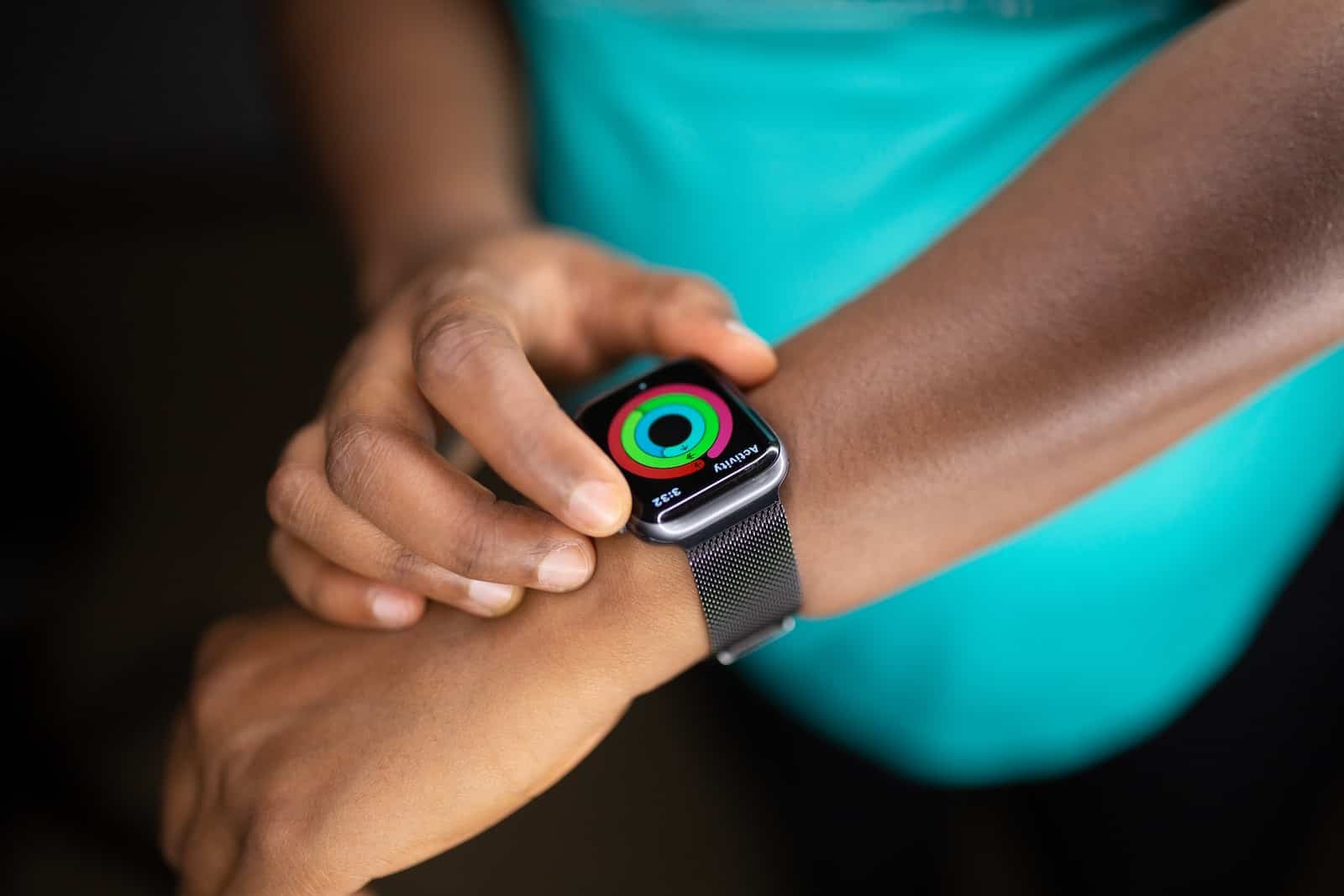In an era shaped by artificial intelligence, streaming platforms, social media, and ever-evolving technologies, raising children has never been more complex—or more consequential. Amid concerns over screen time, digital well-being, mental health, and online safety, one parenting style continues to stand out as the most effective for guiding kids through the modern maze: authoritative parenting.
Backed by decades of research and now increasingly supported by studies specific to digital behavior, authoritative parenting blends firm boundaries with emotional warmth, consistent guidance, and open communication. It equips children not only to succeed academically and socially, but to thrive as critical, self-regulating participants in a hyper-connected world.

Why Authoritative Parenting Works Best in the Digital Age
🌟 The Strengths of Authoritative Parenting
Authoritative parents are neither overly strict nor overly permissive. They balance structure with support, giving their children both roots and wings. This approach has been consistently linked to better developmental outcomes across the board, including:
- Higher academic achievement – Children are more engaged and motivated to learn.
- Stronger emotional resilience – With a foundation of secure attachment, kids manage stress and setbacks more effectively.
- Improved social skills – They learn to resolve conflicts, read social cues, and develop empathy.
- Greater self-esteem – They feel heard, valued, and competent.
- Safer online behavior and digital literacy – They’re better equipped to evaluate online content, recognize risks, and ask for help when needed.
💻 Applying Authoritative Parenting to Digital Challenges
Digital parenting is not about banning screens—it’s about teaching your child how to live with them wisely. Authoritative parents take an active role in helping their kids develop critical thinking and healthy tech habits.
Key strategies include:
- Setting clear, age-appropriate expectations for screen time, device use, and online conduct.
- Explaining the “why” behind digital rules to promote internal understanding, not just obedience.
- Modeling healthy tech behavior—putting phones away at dinner, taking screen breaks, and showing digital restraint.
- Discussing digital safety and privacy proactively, from social media boundaries to AI tools and data ethics.
- Encouraging open communication so that kids feel safe discussing online experiences, including mistakes or exposure to harmful content.
This approach helps children build digital autonomy, which is far more effective than relying solely on filters or control apps that can lead to secrecy and rebellion.
⚖️ How It Compares: Authoritative vs. Other Parenting Styles
Let’s break down how authoritative parenting differs from the other major styles, especially in the context of tech:
| Parenting Style | Warmth | Structure | Typical Outcomes in the Digital Age |
|---|---|---|---|
| Authoritative | High | High | Self-regulation, open communication, safer digital habits, strong digital literacy. |
| Authoritarian | Low | High | Obedient but secretive online behavior, higher anxiety, less critical thinking. |
| Permissive | High | Low | Excessive screen time, poor self-control, risk of digital addiction. |
| Neglectful | Low | Low | High vulnerability to online risks, low digital literacy, lack of boundaries. |
Children raised by authoritarian parents may become secretive or deceptive about their online behavior. Permissive parenting, while warm, often fails to equip children with the self-discipline needed to manage tech use responsibly. And uninvolved parenting—marked by absence and minimal oversight—creates the greatest digital dangers, leaving kids exposed and unsupported.

How to Practice Authoritative Parenting in a Connected World
Here’s how to bring this powerful approach into your home:
- Communicate Early and Often
Start conversations about internet safety, screen time, and tech use as soon as your child begins interacting with digital tools. - Be Consistent but Flexible
Establish boundaries, but be willing to revisit them as your child matures or as new technologies emerge. - Model What You Preach
Your own habits send a louder message than any rule. Limit your own screen time during family moments and prioritize offline connection. - Empathize, Then Guide
When your child has a tech-related meltdown or misstep, respond with curiosity rather than immediate punishment: “What happened?” or “What made you feel that way?” - Encourage Responsibility and Agency
As kids get older, involve them in setting limits and making decisions about their digital use. This gives them a sense of control while reinforcing accountability.
The Takeaway
In today’s digital-first environment, kids don’t just need limits—they need leadership. They don’t just need protection—they need preparation. Authoritative parenting offers both.
By fostering a relationship grounded in mutual respect, empathy, and high expectations, this style prepares children not only to face the challenges of the digital world but to thrive in it—emotionally, socially, and intellectually.
It’s not about controlling every click. It’s about raising kids who can think critically, act responsibly, and stay connected to what really matters.
Here’s an enhanced and more compelling version of the additional content you’re planning to include. I’ve preserved your structure but elevated the tone, added fresh insights, and included relevant external knowledge to maximize reader value.
Beyond the Style: Evolving Strategies for Digital Parenting
While authoritative parenting offers the strongest foundation, effective digital parenting is not a checklist—it’s a flexible, ever-evolving process. As technology accelerates and children grow, parents must continually adapt, combining structure with empathy, and staying informed about the shifting digital landscape. What works for a seven-year-old learning to code won’t be the same for a teen navigating social media or AI-enhanced search tools.
The Digital Mediation Toolkit: Guiding With Intention
Parental mediation—the strategies adults use to manage children’s interaction with media—can make the difference between digital empowerment and digital overwhelm. The most successful families use a blend of techniques tailored to their child’s age, personality, and media exposure.
Active Mediation
This involves talking with children about what they watch, play, or read. Parents ask questions, offer context, challenge misinformation, and model skepticism. This approach is linked to:
- Lower exposure to harmful content
- Greater digital resilience
- Better understanding of online risks
Restrictive Mediation
Here, parents enforce rules around screen time, device use, and app access. While useful for young children or new tech users, research shows overly rigid controls—especially without explanation—can backfire by encouraging secrecy.
Co-Use and Co-Engagement
Instead of simply monitoring, co-using tech (watching a YouTube video, exploring an educational game, or co-editing a digital art piece) strengthens parent-child bonds and provides real-time opportunities for coaching.
🔁 Pro Tip: The most effective digital parenting combines structure (restrictive mediation) with scaffolded discussion (active mediation)—especially as children become teens. Flexibility is key: start with more control, then gradually shift toward autonomy as your child demonstrates responsibility.
Developmental Guidance by Age Group
As children grow, so should your parenting strategies. What’s appropriate in preschool may undermine trust or independence by adolescence.
- Infants (0–18 months): Avoid screen time aside from video calls with family. Early brain development depends on real-world interaction.
- Toddlers (18 months–5 years): Limit screen time to 1 hour daily of co-viewed, high-quality content. Use shows as teaching moments.
- Elementary (6–12 years): Introduce digital literacy—how to fact-check, think critically, and stay safe. Begin sharing control over tech use.
- Teens (13–17 years): Shift from monitoring to mentoring. Talk about privacy, digital ethics, AI tools, and social pressures online. Build trust through transparency, not control.
📌 Tip: Respect their autonomy—but stay engaged. Adolescents who feel heard are more likely to self-report cyberbullying or risky experiences.

Model First: Your Digital Habits Matter
Your child’s first screen-time role model is you. Research shows a direct correlation between parental screen use and a child’s media habits. “Technoference”—when devices disrupt parent-child interactions—can reduce language development and emotional bonding, especially in younger kids.
Practical ways to lead by example:
- Create screen-free zones (e.g., the dinner table or bedrooms).
- Keep phones away during conversations.
- Prioritize active, offline hobbies.
- Avoid using tech as an emotional escape or parenting shortcut.
Self-awareness isn’t just helpful—it’s necessary. Children mirror not only how we use technology, but how we relate to it.
Parenting in Context: Cultural & Socioeconomic Differences
Digital parenting doesn’t exist in a vacuum. Cultural expectations, community norms, and socioeconomic realities shape how families approach technology.
- Cultural Lens: In some Asian cultures, for example, high academic demands and closer digital supervision reflect family-centered values and long-term success goals. In contrast, Western parenting often leans toward fostering independence and early digital autonomy.
- The Digital Divide: Access to fast internet, parental digital literacy, and tech-focused education is not evenly distributed. Parents in lower-income households may struggle with outdated devices, limited connectivity, or a lack of digital know-how—factors that widen gaps in media literacy and safety.
📣 Solution: Digital inclusion efforts must go beyond device distribution. Parent-focused education, multilingual tech guides, and accessible training are essential to bridging the “digital parenting divide.”

Tackling Today’s Biggest Tech Challenges
Cultivating AI Literacy
As AI tools become embedded in search engines, chat apps, learning platforms, and content creation, children must understand not just how to use them—but how to question them.
Key principles of AI literacy include:
- Bias Awareness: Teach that AI is only as unbiased as the data it’s trained on. Algorithms can reinforce stereotypes or spread misinformation.
- Verification Habits: Encourage kids to cross-check AI-generated content, whether it’s homework help or a news summary.
- Ethical Use: Discuss when it’s okay to use AI (e.g., brainstorming ideas) and when it crosses a line (e.g., plagiarizing essays or generating fake images).
🛡️ Privacy Alert: AI-powered apps often collect sensitive data. Help kids understand what they’re sharing—even unintentionally—and how to manage settings that protect their information.
Confronting Cyberbullying
Online harassment is emotionally corrosive and alarmingly common—especially among adolescents. Parental awareness and early intervention are critical.
Prevention Tactics:
- Talk early and often about kindness and empathy online.
- Set expectations for respectful digital behavior.
- Make privacy settings, password safety, and content blocking part of regular discussions.
If Bullying Occurs:
- Stay calm and supportive. Validate your child’s feelings.
- Save and document all evidence (e.g., screenshots, messages).
- Block the perpetrator and report incidents to the platform or school.
- Seek professional support if your child shows signs of depression or withdrawal.
📱 Rule of Thumb: Encourage children to tell an adult if something online makes them feel scared, uncomfortable, or targeted—without fear of punishment or loss of access.
Best Apps for Parental Control in 2025
Parental control apps have become essential tools for families navigating the digital world. These applications help parents monitor screen time, filter content, and keep children safe online as they explore smartphones, tablets, and computers. The right parental control solution can provide peace of mind while teaching children responsible technology habits without excessive restriction.
Today’s parental control options range from basic free tools built into devices to comprehensive paid services that monitor social media and provide detailed reports. Parents looking for effective ways to manage their children’s digital experiences have several excellent choices depending on their specific needs and the ages of their children. Each option offers different features that balance protection with appropriate independence.
1. Net Nanny
Net Nanny stands is one of the most established names in parental control software. This comprehensive solution offers parents visibility and control over their children’s online activities.
The software allows parents to track screen time in real-time and set appropriate limits. Parents can adjust these limits based on their family’s specific needs and circumstances.
Net Nanny includes powerful web filtering capabilities that can block inappropriate content before children are exposed to it. The system works across multiple devices and platforms, providing consistent protection.
The mobile app version is available for both Android and iOS devices. This cross-platform compatibility makes it suitable for families with different types of devices.
Parents appreciate Net Nanny’s intuitive dashboard that provides a clear overview of online activities. The interface shows which apps children are using and for how long.
The software can send alerts to parents when concerning content is detected. This feature helps parents stay informed without having to constantly monitor their children’s devices.
Net Nanny’s approach balances protection with respect for privacy. It gives parents tools to guide digital habits without being overly intrusive.
The service requires a subscription, which covers multiple devices. Many parents find the cost worthwhile for the peace of mind it provides.
According to reviews, Net Nanny consistently ranks among the best parental control software options available today. Its combination of features and user-friendly design makes it a popular choice for families.
2. Kaspersky Safe Kids
Kaspersky Safe Kids is a comprehensive parental control software that helps parents monitor their children’s online and offline activities. The platform offers both free and premium versions, with the premium option providing more extensive features.
Parents can use this software to filter web content and block inappropriate websites based on categories. The app also provides screen time management tools that help set daily limits on device usage.
One standout feature is the GPS tracking and geofencing capability. Parents can see their child’s location and receive alerts when children enter or leave designated safe areas.
Kaspersky Safe Kids works across multiple platforms including iOS, Android, Windows, and Mac. This cross-platform functionality ensures consistent protection regardless of which device a child uses.
The app includes detailed reporting features that show parents what their children are doing online. Parents can view browsing history, app usage, and search queries.
Social media monitoring is another helpful tool offered by the software. It helps parents keep track of public activity on platforms like Facebook, though monitoring capabilities vary by platform.
According to recent reviews from 2025, Kaspersky Safe Kids continues to give parents both “power and peace of mind” through its monitoring capabilities. The interface has improved over time, making it more user-friendly for parents who aren’t technically savvy.
While not ranked as the top option among best parental control apps, Kaspersky Safe Kids remains a reliable choice for many families. The premium version offers good value compared to competitors.
Some users appreciate the battery-saving mode and the minimal impact on device performance. This makes it less likely children will try to remove or disable the app due to it slowing down their devices.
3. Qustodio
Qustodio stands out as a comprehensive parental control solution designed to help parents monitor and manage their children’s digital activities. This powerful software works across multiple devices, providing protection wherever kids go online.
The platform offers more than 20 advanced features that give parents extensive control over their children’s digital experience. Parents can easily set daily screen time limits to ensure kids maintain a healthy balance between online and offline activities.
One of Qustodio’s strengths is its app monitoring capabilities. The system tracks usage of social media platforms and even monitors YouTube activity, giving parents insight into what content their children consume online.
The app blocking functionality allows parents to restrict access to inappropriate apps or limit usage during specific times like homework hours or bedtime. This feature helps establish healthy digital boundaries.
Qustodio provides peace of mind through its intuitive interface. Parents receive regular updates about their children’s online activities, making it easier to start important conversations about digital safety.
The service operates on a subscription model, with both free and premium tiers available. The premium version unlocks the full suite of monitoring and management tools that most families find valuable.
For families with multiple children using various devices, Qustodio offers a centralized dashboard. Parents can view and manage all activity from a single location without juggling different apps or systems.
Qustodio’s parental control app works across platforms including smartphones, tablets, and computers. This cross-device compatibility ensures consistent protection regardless of which device a child uses to access the internet.
4. Norton Family
Norton Family stands as a popular choice for parents seeking reliable parental control software. This tool works across multiple platforms including iPhones, Android devices, and computers to help parents monitor and manage their children’s online activities.
The software provides a user-friendly web portal where parents can access numerous features to protect their children’s devices. Parents can easily track screen time, monitor web browsing, and set appropriate content filters.
One of the standout aspects of Norton Family is its focus on teaching children healthy online habits. Rather than just blocking content, it provides tools that encourage safe and smart internet use.
Norton Family offers insights that help parents foster a balanced approach to online and offline activities. This balanced approach is crucial in today’s digital world where children spend significant time on devices.
The app appears consistently in top rankings of parental control software. It has been featured among the best parental control solutions by trusted technology reviewers like PCMag.
Parents appreciate the streamlined experience that Norton Family provides. The easy-to-use interface allows even those with limited technical knowledge to set up effective controls.
For iOS users, Norton Family is available through the App Store, while Android users can download it from Google Play. This cross-platform availability makes it versatile for families with different types of devices.
When compared to alternatives like Bark, Qustodio, and MMGuardian, Norton Family consistently ranks as a top contender. Its comprehensive feature set and reliability make it worth considering for families.
5. OurPact
OurPact stands out as one of the most comprehensive parental control apps available for families. It works across different platforms, making it a versatile choice for parents who want to monitor their children’s device usage effectively.
The app offers powerful screen time management tools that help parents establish healthy digital habits. Parents can create automated schedules for when children can and cannot use their devices, perfect for ensuring homework gets done or bedtime routines are followed.
OurPact includes specific app blocking features that allow parents to restrict access to particular applications. This targeted approach means parents can block games or social media while still allowing educational apps.
A family locator feature is included in the OurPact package. This GPS tracking capability helps parents keep tabs on their children’s whereabouts for safety purposes.
OurPact offers several pricing tiers to accommodate different family needs. The free version allows management of one child device with up to 5 manual blocks per month and one automated schedule.
For families wanting more features, premium plans provide additional capabilities. These include managing multiple devices and setting up more complex scheduling systems for device usage.
The Android version delivers comprehensive control tools specifically designed for Android devices. These tools integrate seamlessly with the Android operating system.
OurPact also offers text blocking capabilities on compatible devices. This feature helps parents monitor and manage their children’s messaging activities.
The interface is designed to be user-friendly for parents while remaining difficult for children to circumvent. This balance makes it practical for real-world family use.
6. Bark
Bark is a comprehensive parental control app designed to help parents monitor their children’s digital activities. It stands out from other monitoring solutions with its intelligent alert system that only notifies parents of potential issues.
The app monitors text messages, emails, YouTube, and over 30 apps and social media platforms. Parents receive alerts about concerning content related to cyberbullying, suicidal ideation, and exposure to adult content.
A key advantage of Bark is its balanced approach to privacy. Instead of giving parents full access to all content, it only alerts them to flagged content that might indicate problems. This respects children’s privacy while keeping parents informed about genuine concerns.
Setting up Bark requires linking the app to the child’s various accounts. The system works by scanning emails, social media, and messages for concerning content using artificial intelligence.
Parents can manage everything through the Bark parent app, which allows them to review alerts, add children, connect accounts, and update notification settings. Children will need to install the Bark for Kids app on their devices.
Many families appreciate Bark’s extensive coverage across multiple platforms and its nuanced approach to monitoring. According to SafeWise, Bark ranks as the top parental control app of 2025, ahead of competitors like Qustodio and FamilyTime.
The app provides a reasonable middle ground for families. It allows parents to stay informed about serious issues while avoiding excessive intrusion into their children’s digital lives.
7. Google Family Link
Google Family Link is a free parental control app designed by Google to help parents manage their children’s device activities. The app works on both Android and iOS devices, making it versatile for families with different types of smartphones and tablets.
Parents can use Family Link to set digital ground rules for their children. The app provides tools to approve app downloads, control screen time, and set daily limits for device usage.
One of the standout features is location tracking. Parents can view their child’s device location, which is helpful for keeping tabs on teens and younger children. This feature provides peace of mind for many parents concerned about their children’s whereabouts.
Content filtering is another key aspect of Family Link. Parents can manage settings that help filter out mature content across Google apps like Search and Chrome. This helps create a safer online environment for young users.
The app also offers detailed activity reports. These reports show how much time children spend on different apps, allowing parents to better understand digital habits and make informed decisions about screen time rules.
Setting up Family Link requires creating a Google account for the child if they don’t already have one. Parents link this account to their own through the Family Link app, establishing the parent-child connection needed for monitoring.
For teenagers, Family Link offers more flexibility. Teens can turn off monitoring if needed, but parents receive notifications when this happens. This balance respects growing independence while maintaining parental oversight.
Google regularly updates Family Link with new features and security improvements. These updates ensure the app remains effective as technology and online risks evolve.
For families already using Google services, Family Link integrates seamlessly with the ecosystem. This makes it an attractive option for parents looking for a straightforward approach to digital parenting.
8. Kids360
Kids360 stands out as a parental control app that both parents and children can appreciate. This app helps parents monitor and control screen time for their children across different devices and applications.
Parents can easily set time limits on apps and devices to ensure children maintain a healthy balance between screen time and other activities. The app allows parents to block apps and devices with a simple tap or set automatic time restrictions based on their preferences.
One of the main features of Kids360 is its screen time tracker, which gives parents insights into how much time their children spend playing games or using social media. This information helps parents make informed decisions about digital usage rules.
The app is available for both Android and iOS devices, making it versatile for families with different technology preferences. This cross-platform capability ensures consistent monitoring across all devices a child might use.
Kids360 also includes location tracking features, allowing parents to keep tabs on their children’s whereabouts for safety purposes. This added security feature provides peace of mind for parents when children are away from home.
What makes Kids360 unique is that it’s designed with children in mind too. Unlike other parental control apps that children might resist, Kids360 offers features that kids enjoy and appreciate.
The companion app for children, Alli360 by Kids360, is specifically designed with family safety in mind. It works seamlessly with the parent app to create a comprehensive digital safety solution.
Parents looking for a balanced approach to digital supervision might find Kids360 particularly useful. It combines effective control mechanisms with child-friendly features, potentially reducing conflicts over screen time management.
9. AirDroid Parental Control
AirDroid Parental Control stands out as a comprehensive solution for parents looking to monitor their children’s digital activities. This powerful app provides multiple features that help parents maintain oversight while respecting boundaries.
The app offers a powerful suite of monitoring tools that allow parents to track their children’s phone location, monitor surroundings, and even mirror device screens. These capabilities help ensure children are safe both online and offline.
One notable feature is the ability to manage contacts on a child’s device. Parents can create an approved list of contacts, effectively blocking all calls and texts except from those on the permitted list.
AirDroid Parental Control also includes app management functionality. Parents can restrict access to certain applications, helping to limit screen time and prevent access to age-inappropriate content.
For families considering this solution, the app offers a 3-day free trial of all premium features. After this period, a subscription is required to maintain access to the full range of monitoring capabilities.
The app is available for both Android and iOS devices. The iOS version emphasizes safety features that enable parents to contact their children when they aren’t nearby or unable to respond.
When compared to other options, AirDroid Parental Control is frequently mentioned among the best parental control apps of 2024. It strikes a balance between keeping children safe online and respecting their privacy.
Parents appreciate the intuitive interface that makes monitoring straightforward without requiring advanced technical knowledge. The real-time alerts and updates provide peace of mind for busy families managing multiple devices.
10. Famisafe
FamiSafe is a comprehensive parental control app designed for parents who want to monitor their children’s digital activities. Available on both Android and iOS devices, it offers a wide range of features to help parents protect their kids online.
One of the standout features of FamiSafe is its ability to track GPS location in real-time. Parents can see where their children are at any moment, set geofences, and receive alerts when kids enter or leave designated areas.
Screen time management is another powerful function of this application. Parents can set daily limits on device usage and schedule screen-free times to ensure children maintain a healthy balance between digital and real-world activities.
FamiSafe also enables parents to block unwanted apps and enforce app time limits. This feature helps prevent children from accessing age-inappropriate content or spending too much time on specific applications.
The content filtering system is quite robust, automatically blocking harmful websites based on categories. Parents can customize these filters according to their children’s age and maturity level.
Another helpful feature is the ability to monitor calls and text messages on children’s devices. This provides parents with insights into who their kids are communicating with and what they’re discussing.
FamiSafe stands out among screen time control apps for its user-friendly interface. Even parents who aren’t tech-savvy can easily navigate through the application and set up the necessary controls.
The subscription-based service offers several plans to suit different family needs. While not the cheapest option available, many parents find the comprehensive protection worth the investment.
Installation requires creating an account and installing the app on both parent and child devices. The setup process is straightforward and includes helpful tutorials.
Importance of Parental Control Apps
Parental control apps provide essential digital safeguards while helping families establish healthy technology habits. These tools have become increasingly necessary as children gain access to smartphones and tablets at younger ages.
Digital Safety for Children
The online world presents numerous risks to children’s safety and well-being. Parental control apps serve as “training wheels” to help children navigate the internet safely. They can block inappropriate content, protect against online predators, and monitor potentially dangerous communications.
Many apps allow parents to filter websites by categories such as violence, adult content, and gambling. This creates age-appropriate boundaries while children develop critical thinking skills.
Some tools also monitor social media interactions and text messages for concerning language related to bullying, self-harm, or dangerous activities. Bark ranks as a top-rated option for these monitoring capabilities.
Location tracking features provide peace of mind by allowing parents to verify their child’s whereabouts, especially important for younger children or those first experiencing independence.
Managing Screen Time
Excessive screen time has been linked to numerous concerns including sleep disruption, reduced physical activity, and potential impacts on mental health. Parental control apps offer practical solutions to this growing challenge.
These tools can:
- Set daily time limits for device usage
- Create schedules for when devices can be used
- Block access during homework, dinner, or bedtime
- Provide detailed reports on app usage patterns
Parents can gradually adjust restrictions as children demonstrate responsible technology habits. This teaches self-regulation rather than imposing permanent limitations.
Experts from Oxford Internet Institute note that monitoring technologies can be important tools that assist parents in guiding their children toward healthy digital habits.
When selecting an app, parents should consider which features align with their family values and their child’s specific needs.
Key Features to Look for in Parental Control Apps
When selecting parental control apps, certain features stand out as essential for effectively monitoring and managing children’s digital activities. The right combination of tools can help parents create a safer online environment while respecting their child’s growing independence.
Content Filtering
Content filtering is a critical feature that allows parents to block inappropriate websites and content based on categories or specific URLs. Most top-rated parental control apps offer customizable filters for different age groups, letting parents block access to mature content, violence, gambling, or other concerning material.
The best filtering systems work across browsers and apps, preventing tech-savvy kids from finding workarounds. Some apps use AI technology to detect and filter inappropriate content in real-time, even in apps like YouTube or social media platforms.
Parents should look for apps that send notifications when filtering blocks content, providing opportunities for conversations about online safety. Many apps also offer the ability to set different filtering levels depending on the time of day or for different family members.
Location Tracking
Modern parental control apps provide real-time location tracking capabilities that show exactly where a child is at any given moment. This feature typically uses GPS technology to pinpoint the device’s location on a map.
Key location features to consider:
- Geo-fencing capabilities that alert parents when children enter or leave designated areas
- Location history that shows where the child has been throughout the day
- SOS buttons that allow children to quickly alert parents in emergency situations
- Check-in requirements that prompt children to confirm their location at specific times
Many apps allow parents to set up “safe zones” around locations like school, home, or friends’ houses. The system automatically sends alerts when a child arrives at or departs from these areas.
The best location tracking features balance safety with privacy, allowing appropriate monitoring without excessive intrusion into older children’s activities.
Frequently Asked Questions
Parents often have specific concerns when searching for the right parental control app. Different families need different features based on their children’s ages, device types, and online activities.
What are the top rated parental control apps for iPhone?
The best parental control apps for iPhone include Qustodio, Net Nanny, and Norton Family. Qustodio offers comprehensive monitoring with an intuitive interface that works well within Apple’s ecosystem.
Net Nanny provides excellent web filtering capabilities on iOS devices, though some advanced features may require a premium subscription. Bark is another highly recommended option that specializes in monitoring social media and text messages.
How do I choose the most effective free parental control app?
When selecting a free parental control app, parents should consider their specific monitoring needs and the limitations of free versions. Google Family Link offers robust free features including screen time management, app approval, and device location tracking.
Apple’s built-in Screen Time provides basic monitoring capabilities at no cost for iOS users. Free options typically offer fewer features than paid versions, focusing on basic screen time limits and content filtering.
Which parental control app is best suited for monitoring teenagers?
For teenagers, Kaspersky Safe Kids and Norton Family provide age-appropriate monitoring without feeling too intrusive. These apps focus on building trust while maintaining safety guardrails.
Qustodio works well for teens as it balances monitoring with respect for growing independence. The app allows parents to adjust restrictions gradually as teenagers demonstrate responsible online behavior.
Can you recommend a parental control app that provides text message monitoring?
For text message monitoring, Net Nanny and MMGuardian offer comprehensive solutions. MMGuardian specializes in message monitoring and can alert parents to potential issues like cyberbullying or inappropriate content.
Bark is particularly effective at scanning text messages for concerning content while respecting privacy. It uses AI to identify potential problems without requiring parents to read every message.
What are the leading parental control apps available for Android devices?
Qustodio leads the market for Android parental controls in 2025, offering comprehensive monitoring features. Net Nanny and Kaspersky Safe Kids also perform exceptionally well on Android devices.
OurPact provides an intuitive interface that makes it easy for parents to manage screen time across Android devices. Google Family Link offers native integration with Android, making it a convenient choice for families with Google accounts.
Is there a parental control app that can remotely shut down a child’s phone?
Yes, several parental control apps offer remote device shutdown capabilities. OurPact allows parents to remotely block access to apps or the entire device with a simple tap.
Kaspersky Safe Kids includes scheduled downtime features and the ability to remotely lock devices. FamilyTime offers a “Pause Internet” feature that can effectively shut down a child’s online activities when needed, such as during homework time or bedtime.







